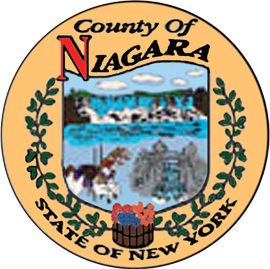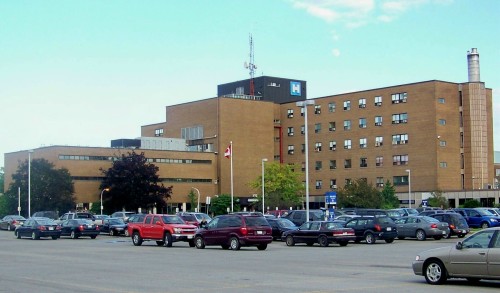Apparently, water taxes, in this case a tax on land through which water runs, is a cause of double taxation for city property owners. County legislators of Niagara are then pushing for the cancellation of this tax. The arguments are discussed in this article.

Image Source: irishtimes.com
County Legislator Harry Apolito is taking a crack at getting the county to stop taxing the land through which the city’s raw water line runs.
Apolito, D-Lockport, has put forth a resolution asking the Legislature to eliminate county tax on a 13-mile stretch crossing Pendleton, Wheatfield and North Tonawanda. The resolution is being taken up Tuesday by the Legislature’s administration committee, which decides whether to send the resolution on to the whole Legislature.
The resolution somewhat mirrors one pitched last summer by Legislator Glenn Aronow, R-Lockport, that died in committee.
Eliminating county tax on the land would cut expenses in the city’s beleaguered water fund and avert double taxation of city property owners, Apolito said.
“City taxpayers are paying two county tax bills, one for real property and the other for water line which is incorporated into their water bill,” he said. “We’re at the mercy of all the assessors in the towns of Pendleton and Wheatfield and the City of North Tonawanda and we have no recourse. They assess us at a certain rate and God only knows what the rate will be two years from now, five years from now.”
In 2005, the city forked over $62,000 in county tax on the water line.
Lockport’s water operation is the only one in the county that’s being taxed by multiple municipalities, Apolito said. The city gets raw water from the Niagara River in North Tonawanda and there are no short cuts.

Image Source: smithboys.com
Aronow, who agreed to co-sponsor Apolito’s resolution if it survives administration committee vetting, said the problem for Lockport boils down to a political power struggle. While legislators recognize the city’s unique situation, a dispute about the extent of Lockport’s debt to the county workers’ compensation fund is still simmering and legislators are linking the two issues.
When his resolution was vetted by the administration committee, Aronow said he found legislators believing the city “still owes the county $200,000 due to the city’s pullout (from the self-insured compensation pool). Until that situation is addressed, the Legislature as a whole did not have any interest in granting relief to the city,” he said.
Five months later, the linking apparently continues.
“From talking to my colleagues I don’t see any way around it,” Aronow said. “I think legislators are willing to work on the tax issue but there has to be movement on the workers comp issue.”
That doesn’t sit well with Mayor Michael Tucker, who’s not bashful about referencing costs incurred by the city because it’s the county seat.
“First, the county has 14 buildings in the city, assessed at more than $5 million and they’re all off the (city) tax roll,” Tucker said. “Second, we do collect the county’s taxes for them and we don’t charge back for the service.”
The city yielding on the subject of worker’s comp debt isn’t likely, according to Tucker.
“We paid them a quarter of a million dollars (to settle the pullout debt),” he said. “They gave a sweetheart deal to (North Tonawanda), they gave a nice deal to somebody else. We paid them and they came back for more. As far as we’re concerned, we paid them what we thought was a fair amount.”
City officials including Tucker, assistant engineer Norm Allen, utilities director Mike Diel and retired water chief Pete Sharkey already sat with the administration committee a few weeks ago to help Apolito defend tax relief. It was a bit awkward, according to Tucker, who said Legislator Gerald Farnham, R-Pendleton, had questions about flooding in Pendleton that, to him, seemed irrelevant and Legislator Malcolm Needler, R-North Tonawanda, made references to Fortistar, a large water user in that city that decided in 2004 to purchase the commodity from Lockport instead of North Tonawanda.
“Legislators are welcome to their opinions (about side issues), but let’s look at the things the city’s doing for the county. We’re just looking for a little give-and-take.”
County tax on the raw line land increased 71 percent in the past five years, Apolito said. If the county eliminated tax on the land and spread the $62,000 levy among the rest of the county, it would cost others “three-quarters of a penny per $1,000 of assessed valuation. That’s an extra 75 cents per year on a $100,000 property.”
Tucker has pitched taking the savings from tax relief and applying it to infrastructure repair within the city. The condition of the raw water line running through other municipalities is fine, Apolito said. Leaking is a problem only inside the city, where the antiquated distribution system is losing more than a third of all finished water.

Image Source: marinas.com
The water fund is breaking even only after a series of steep rate increases last year and money to get ahead in repairs is not available.
The administration committee will meet at 6 p.m. Tuesday in the county Public Safety Building on Niagara Street Extension.
Glenn Aronow once pushed for similar legislation, which has fallen by the wayside in committee discussions. He has since then established a PR agency called Regency Communications.
























